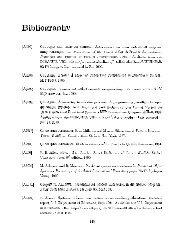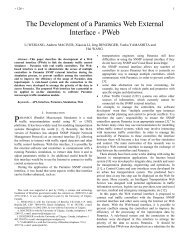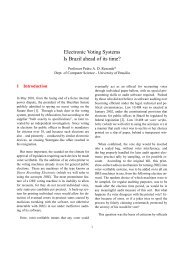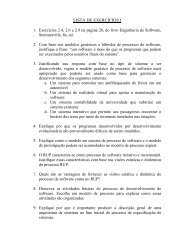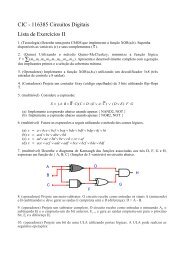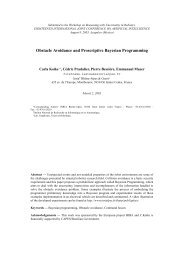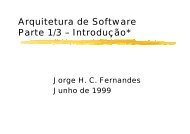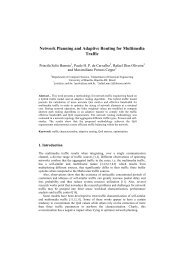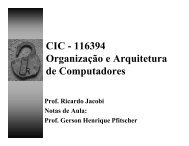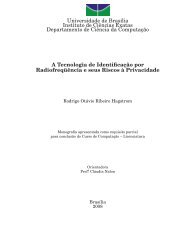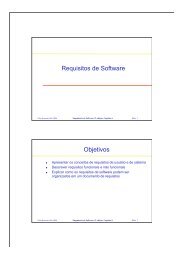TABLE IV. Descriptive data for closure duration To, pressure difference in the closure Pd, pressure atclosure Pc, and pressure at release Pr. To and Pd are the two measures used to n from ; Pd=Pr−Pc. Eachcell in the first three rows shows the group mean standard deviation. The last row provides the ratio of the5 year olds to the adults means and standard deviations calculated separately.Closure duration ToPressure differencePdPressure at closurePcPressure at releasePr/b/ /p/ /b/ /p/ /b/ /p/ /b/ /p/5 year olds 106.7 17.9 113.7 21.4 4.9 1.9 5.2 1.8 2.5 0.8 3.4 1.1 7.4 2.0 8.6 1.910 year olds 86.7 17.9 82.9 18.0 3.9 0.9 4.4 0.7 2.4 0.8 3.9 1.5 6.3 1.2 8.3 1.8Woman 75.5 10.4 75.6 9.6 2.7 0.9 2.9 1.2 1.7 0.5 2.9 0.9 4.3 1.1 5.8 1.5Ratio: 5 yearolds to women1.4 1.7 1.5 2.2 1.8 2.1 1.8 1.5 1.5 1.6 1.2 1.2 1.7 1.8 1.5 1.3tions for were also fairly large here refer back to Fig. 4.Review of the women’s data showed four cases in whichindividuals had values at or lower than Müller and Brown’saverages. The same was true for one 10 year old. Thus, thecurrent adult data overlap with those of Müller and Brown,and appear to be generally consistent with the results of theearlier study. Section IV raises some issues concerning which may explain the wide variation in even in adultspeakers.IV. DISCUSSIONA. Age and stop consonant voicingPast studies have found that children up to 6 years ofage produce fewer voiced stops and less closure voicing thanadults e.g., Barton and Macken, 1980; Kewley-Port and Preston1974; Smith, 1979; Zlatin and Koenigsknecht, 1976.Qualitatively, the current data showed the least /b/ voicingand the largest number of devoiced /b/ productions in the5 year olds, but age effects did not reach significance for anyof the voicing measures. Four factors should be consideredin interpreting this result: a nature of the voicing contrast inEnglish; b phonetic context; c age of the children; and dsample size.Given that closure voicing is not obligatory in stressed,syllable-initial contexts in American English e.g., Liskerand Abramson, 1964; Zlatin, 1974, all speakers have theoption of producing voiceless unaspirated stops, which maybe motorically less demanding Kewley-Port and Preston,1974. At the same time, the intervocalic frame in which thetarget consonants appeared here tends to facilitate closurevoicing. Children might be particularly susceptible to factorsfavoring devoicing Westbury and Keating, 1986, but to ascribea lack of significant age effects here to the intervocaliccontext would be to assert that children have a stronger positionalbias toward voicing. Given smaller vocal tract sizesand higher phonation threshold pressures in children, there isno reason to think they should be more likely to voice in anintervocalic position than adults. That is, the phonetic contextmay have predisposed all speakers to produce voicedstop closures, but this should not have made age differencesless likely.More likely is that the children’s ages and the groupsizes had the effect of minimizing age effects. Past developmentalstudies of consonant voicing have mostly concentratedon very young children. The requirements of the experimentaltask used here precluded recording childrenyounger than about 4 years, and the younger group includedindividuals nearing their sixth birthday. These children werethus at the upper end of the age range at which group differenceshave been demonstrated. The intensive within-speakerprocessing here also limited group sizes. Finally, the childrenshowed considerable intersubject variability, as has oftenbeen observed e.g., Eguchi and Hirsh, 1969; Kent and Forner,1980. With a larger sample size, the mean group differencesmay have outweighed the within-group variability toproduce a significant age effect e.g., Kirk, 1999.In contrast to the 5 year olds, the 10 year olds werequalitatively as well as statistically comparable to the womenin their voicing measures. Although a few studies have reportedVOTs for voiced stops in children of this age KentFIG. 5. Differences between values of /p/ and /b/ for each speaker.FIG. 6. Results of correlations Pearson’s r values between and durationof closure voicing for each speaker. Asterisks mark speakers for whom thecorrelation was significant at p0.002.1084 J. Acoust. Soc. Am., Vol. 123, No. 2, February 2008 L. L. Koenig and J. C. Lucero: Voicing and intraoral pressure
TABLE V. Comparison of current measures with those from Müller andBrown 1980, p. 342. The data from the earlier study are estimated fromindividual subject plots.Current study 5 year olds 0.088 0.10910 year olds 0.083 0.141Women 0.040 0.104Men 0.033 0.119Müller and Brown 0.010 0.067and Forner 1980; Ohde, 1985; Whiteside et al., 2004, theirdata do not clearly indicate the degree of closure voicing,since a positive VOT may indicate a truly voiceless stop aswell as one in which voicing dies out before the end of theclosure. Based on the current results, it appears that 10 yearolds demonstrate essentially mature closure voicing in /b/,despite continuing differences from adults in vocal tractsizes, aerodynamic quantities, speech segment durations, andtoken-to-token variability e.g., Bernthal and Beukelman,1978; Eguchi and Hirsh, 1969; Goldstein, 1980; Kent andForner, 1980; Netsell et al., 1994; Stathopoulos and Weismer,1985; Walsh and Smith, 2002. These older childrenmay thus have mastered methods of vocal-tract pressuremanagement so as achieve adult-like closure voicing. Thesame explanation may hold for those 5 year olds whose voicingbehavior was more adult-like. One difficulty with thisinterpretation, particularly for the younger children, is thatthe correlations between voicing and introral pressure cf.Sec. IV C were less often significant in children than adults,and sometimes reversed. Modeling of closure voicing withlaryngeal and vocal tract models scaled to child sizes mayprovide greater insight into the conditions needed to producevoiced stops in child speakers.B. Quantitative pressure pulse analysis and agePast work has established that children as young as4 years of age, like adults, produce higher peak P io in voicelessstops than in voiced Arkebauer et al., 1967; Bernthaland Beukelman, 1978; Brown, 1979; Lisker, 1970; Malécot,1966; Miller and Daniloff, 1977; Stathopoulos and Weismer,1985; Subtelny et al., 1966; Warren and Hall, 1973, therebydemonstrating some aerodynamic differentiation of consonantsaccording to voicing category. At the same time, previousauthors particularly Kewley-Port and Preston, 1974have attributed limited closure voicing in young children toimmature control over intraoral pressure, and Müller andBrown 1980 specifically suggested that P io might rise fasterin children than adults. These results led to the predictionthat and its normalized counterpart n would differ betweenchildren and adults.The data for showed a significant consonant effect, butage effects failed to meet significance. Comparison of thewomen and children’s data with two men recorded post-hocand those recorded by Müller and Brown 1980 showeddecreasing values for speakers with larger vocal tracts,providing some support for the possibility of a size-relatedtrend, and it may be again that a larger sample size and/or a/b//p/younger group of children would yield significant age effects.Alternatively, children may perform more extremevolumetric adjustments than adults in order to control P ioincreases in their smaller vocal tracts but see again the commentson this point in Sec. IV C.The results for n showed neither age nor consonanteffects. Inspection of the measures used to derive n from ,namely closure duration To and pressure difference in thestop Pd, showed proportionally greater age differences forPd. This suggests that is a more valid measure for comparingacross ages than n . The normalized measure may, however,still be appropriate to adjust for speech rate or loudnessdifferences within individual speakers or age groups.C. Relationships between P io and voicingThe differences between /p/ and /b/ were in the expecteddirection for most speakers, but reversed for three ofthe children. Further, correlations between and voicing durationwere significant for all of the women and for 7/8 ofthe 10 year olds, but only 3/8 of the 5 year olds. Thus,whereas adults have established consistent relationships betweenstop consonant voicing and P io characteristics, as measuredby , many 5 year olds and a few 10 year olds havenot. Correlations in the expected direction that were statisticallyinsignificant suggest that some children may haveimplemented control over P io buildup in target voiced stopswhich was not extensive enough to maintain voicing, or elsethat they exercised such control inconsistently. Correlationsin the reverse direction suggest that some children have infact not yet learned how to manipulate intraoral pressure inorder to maintain voicing. Both of these cases speak againsta general developmental strategy in which children activelyincrease supraglottal volumes more than adults in an attemptto sustain voicing: In such a situation, one might expect evenstronger correlations in children than adults. It is also possiblethat the measure is not sufficient to capture all aspectsof aerodynamic control relevant for stop consonant voicing.As discussed in the following, some unexpected values of were encountered in the course of this work, lending supportto this last interpretation.D. Comparison with Müller and Brown and critiqueThe measures obtained here were somewhat higher, onaverage, than those obtained by Müller and Brown 1980.The particularly high values for /b/ in children compared towomen as well as men may represent a tendency for speakerswith smaller vocal tracts to have limited possibilities for supralaryngealvolume adjustments, but the differences amongthe adults appear to reflect normal cross-speaker variation.Different speech materials may also contribute to variancebetween the two corpora. Whereas the current study placedthe target consonants in an intervocalic, running speech context,Müller and Brown elicited their consonants in isolated,symmetrical, nonsense VCV utterances, with instructions toproduce equal stress on the two syllables. Conceivably, differencesin stress pattern or speaking style may influence measures.J. Acoust. Soc. Am., Vol. 123, No. 2, February 2008 L. L. Koenig and J. C. Lucero: Voicing and intraoral pressure 1085



